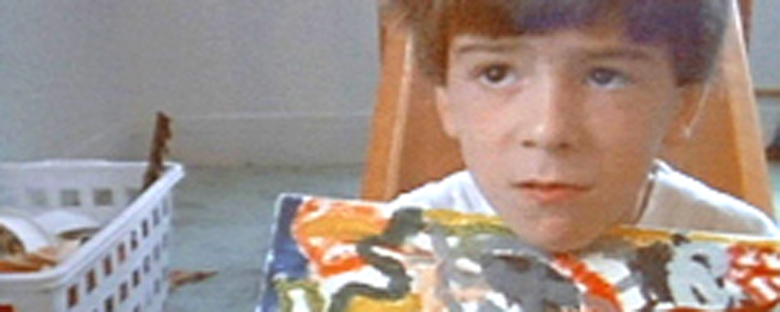Reviews
Ross McElwee
USA, 1996
Credits
Review by Rumsey Taylor
Posted on 31 January 2006
Source First Run Features DVD
Related articles
With the birth of his first son, Adrian, Ross McElwee begins to obsess over the evening news, its deliverance of tragedy and exploitation in daily, 30-minute excerpts. The propagated images — mostly of automobile fatalities and domestic violences — seem artificial. They’re experienced by anonymous people and in anonymous places, horrors that retain some impression of fiction. McElwee’s newborn is the perfect avatar of vulnerability, and challenges this thinking.
The birth coincides roughly with the onslaught of Hurricane Hugo in 1989. The behemoth is predicted to wreak havoc on the coast of South Carolina, home to McElwee’s longtime friend and frequent subject, Charleen. The storm produces images of the damage on the local news that McElwee is familiar with; for one, a bridge that leads to Charleen’s home has been torn from its tethers, and points epic and useless into the sky. Shortly afterward, McElwee is at the very scene, interspersed among some television news crews, aiming his camera at the incredible damage.
He meets Charleen the next morning, and tails her and her son as they evaluate the damage of her property. This journey produces the realization of danger, a verification of the legitimacy — to some extent — of the violence exploited in news programming. This does not restore comfort in McElwee, however. In a motel, transfixed by the local news (as he is often), he comes across the story of a woman who was brutally murdered by a thief at a salon her husband owned. The husband’s expression is one of permanent grievance, and McElwee departs to find him and discuss the loss. The man, Steve Im, is a self-made millionaire, and remarried by the time he is located. He doesn’t immediately discuss the circumstances and effects of his loss, but his behavior exhibits great suppression. His new wife speaks no English, and has no knowledge of his true wealth. Im admits to working over seventy hours a week, and is eager to chaperon McElwee to his various businesses (they even manage a round of golf). Finally, and with the camera seemingly deactivated, Im speaks of his deceased wife (his sorrowful voice is recorded). He has great wealth and a loving family, but his wife’s death has crippled his faith. He spends his life reducing his memory of her.
Contrast this with the story of Salvador Peña, who was trapped for several hours underneath the remains of a parking garage after a Los Angeles earthquake. He survived with debilitating injuries, no longer able to work the two jobs he held prior to support his family in El Salvador. Prior to his rescue (which was overexposed on several news channels at the time), Peña admits a failed attempt to strangle himself with a seatbelt. Despite his crippling misfortune, Peña survives with an enhanced belief in God. At the time McElwee locates him, he spends most of his time reading books on religion.
There is no tactic to exploit in McElwee. There are several instances in the film in which he is observing the same damage as television news crews, and he often films them at work, as curious by their behavior as he may be of any other subject. In doing so he reveals their contrivance, how often they stage scenarios for sound bytes and plug shots. Midway through the film, he is asked by a local news station in his home town for an interview. He grants it, and films the crew as they walk in to his apartment. Affronted by his ceaseless lensing, the interviewer stages two more entrances — these with her crew’s camera activated — to imply some authenticity to her footage.
His tactic in filming the various disasters in the film (the aforementioned hurricane and earthquake, in addition to a massive thunderstorm in Tempe, and a forest fire in the northwest) observes survivors and their interaction with their damage. In his early trip to South Carolina his camera pivots up and along the enormous bridge, and then to everyone else observing it: the other news crews, and passengers on boats in the river below. In isolating these contexts — these faces tied to these locations, often in the same shot — McElwee certifies the proximity of such violence to anyone.
In an epilogue McElwee returns to his home in Boston, his son seen now three years older than he was in the film’s opening. He speaks with genuine contentedness, entertaining his father’s camera without any inhibition (a quality shared in McElwee’s friend, Charleen). This interaction and his travels strengthens the effectiveness of the footage in the six o’clock news; this image of contentedness intends to sustain the threat that is inherent in his son’s life. The film culminates in the news footage of a local murder that sustains not only McElwee’s fear, but also mine, as it occurred only blocks away from my own home in the same city.
We don’t do comments anymore, but you may contact us here or find us on Twitter or Facebook.



